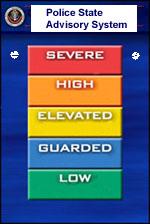Of course the fact that anthropogenic induced warming and climate change exists will still be denied by the true dis-believers. Actual scientists who do honest peer reviewed science have been predicting increasing incidence of events such as this, because of the increased moisture in the air resulting from warming over the oceans.
Emphasis added in the following quotes.
…ALASKA WEST COAST TO BE HIT BY ONE OF THE MOST SEVERE BERING
SEA STORMS ON RECORD…A POWERFUL AND EXTREMELY DANGEROUS STORM OF NEAR RECORD OR
RECORD MAGNITUDE IS BEARING DOWN ON THE WEST COAST OF ALASKA.
AT 9 AM THIS MORNING THE STORM CENTER WAS LOCATED ABOUT 600
MILES SOUTHWEST OF ST LAWRENCE ISLAND. THE STORM IS FORECAST
TO MOVE RAPIDLY NORTHEAST TODAY AND TONIGHT WITH THE CENTER
MOVING ACROSS THE CHUKOTSK PENINSULA TONIGHT. ON WEDNESDAY
THE STORM WILL TAKE A NORTHWESTWARD TRACK INTO THE CHUKCHI SEA.
…
OVER THE BERING STRAIT COAST AND ST LAWRENCE ISLAND…
SUSTAINED WINDS ARE EXPECTED TO REACH 75 MPH WITH MAXIMUM
GUSTS OF 90 TO 100 MPH. ALONG THE CHUKCHI COAST…WIND
SPEEDS OF 65 TO 70 MPH WITH GUSTS AS HIGH AS 90 MPH ARE
EXPECTED. IN THE NOME AREA…SUSTAINED WINDS AS HIGH AS
60 MPH ARE EXPECTED…WITH GUSTS TO 70 MPH. ALMOST ALL OTHER
AREAS OF THE WEST COAST WILL EXPERIENCE MAXIMUM WIND SPEEDS
OF AT LEAST 50 TO 60 MPH.
…AGAIN…THIS WILL BE EXTREMELY DANGEROUS AND LIFE THREATENING
STORM OF AN EPIC MAGNITUDE RARELY EXPERIENCED. ALL PEOPLE
IN THE AREA SHOULD TAKE PRECAUTIONS TO SAFEGUARD THEIR LIVES
AND PROPERTY.SPECIAL WEATHER STATEMENT. NATIONAL WEATHER SERVICE FAIRBANKS AK.
108 PM AKST TUE NOV 8 2011
The storm began its travels earlier this week just east of Japan. During the past 24 to 48 hours, the storm has intensified as it moved northeast toward Alaska and the Bering Sea. The storm is expected to bomb out with its central pressure falling rapidly Tuesday night and into Wednesday. The central pressure could fall to as low as an astounding 940 millibars.
Blizzard conditions will be common across inland western Alaska.
Offshore, waves will reach higher than 40 feet, and dangerous heavy freezing spray will affect the Bering and Chukchi Seas. Waves of 15 to 25 feet are expected to crash along portions of the coastline.
The current lack of sea ice in the Bering Sea will allow this storm to maximize its impact. Ice typically acts as a natural barrier that mitigates the effects of destructive wave action and coastal flooding along the shoreline.
The National Weather Service even warns that the village of Kivalina will be highly vulnerable to damage caused by the erosion and flooding. Kivalina is on a barrier island that has been eroding away for decades. Enough sustained and powerful winds from the southwest could truly destroy the village. Other barrier islands vulnerable to the tremendous onshore fetch will likely be lost also.
(Satelllite imagery at following link.)


